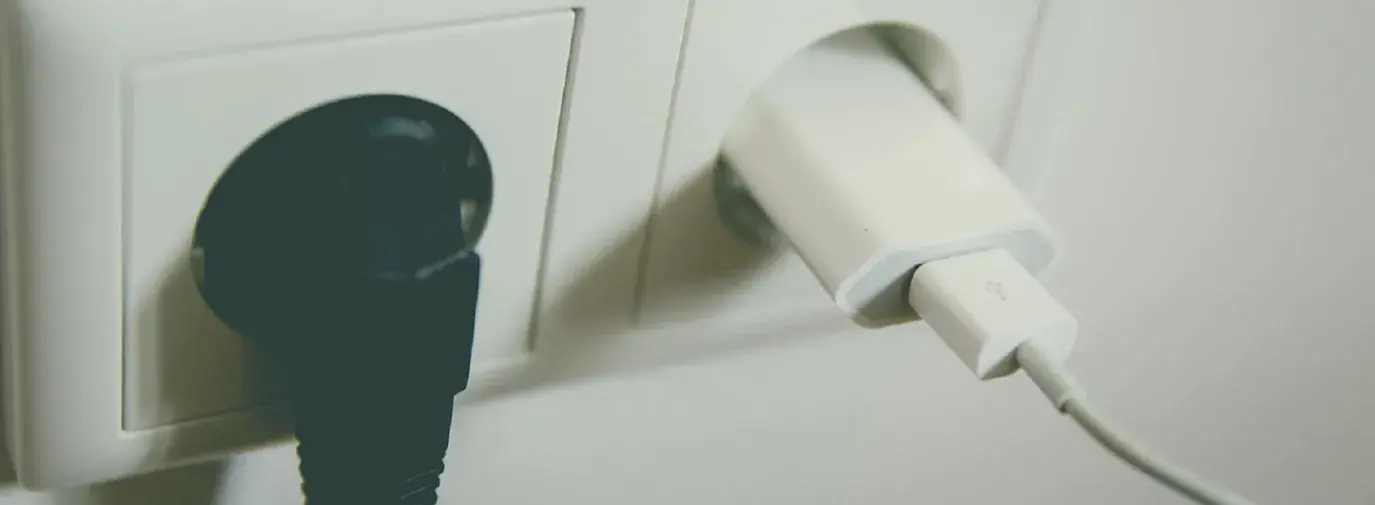
Take these actions and save up to 56 percent of your energy use!
Replace Your Light Bulbs
Take the step: Replace the incandescent light bulbs in your house, even if they haven’t yet burned out, with compact fluorescent light bulbs (CFLs).
Why: You’ve been hearing about the wonders of CFLs for years now—they last ten times longer and use one-fourth as much energy as incandescent bulbs—but you might still have some old incandescent bulbs around your house. Incandescent bulbs are inefficient because they give off 90 percent of their energy in heat—while CFLs give off little heat. Don’t let the higher price of a CFL stop you—because CFLs use so little energy and last so much longer, a CFL bulb will save you $30 or more over its lifetime.
Please note that CFLs do contain a small amount of mercury. However, CFLs still result in fewer mercury emissions than incandescents. The average coal-fired plant spews about 13.6 mg of mercury to power an incandescent bulb, while it only emits 3.3 mg to power a CFL. Add that to the 5 mg of mercury the average CFL contains, and you still come out ahead. Be sure to dispose of CFLs properly: call your local solid waste authority for local options, take them to an Ikea store for recycling, or recycle them by mail with a Sylvania RecyclePak.
Light-emitting diode, or LED, lights are also becoming more widely available for uses around the home. A mercury-free LED light lasts about 50 times longer than an incandescent bulb. You can now find LED reading lamps and LED Christmas lights. A strand of LED Christmas lights uses 90 percent less energy than incandescents.
The big picture: If each home in America replaced one bulb with an Energy Star CFL, it would save enough energy to light 3 million homes for a year and prevent greenhouse gases equivalent to the emissions from 800,000 cars.
Resources: The Energy Star program’s page on CFLs includes information about clean-up and disposal of broken CFLs, as well as energy-saving calculators and purchasing tips.
Plug Your Air Leaks
Take the step: Plug the energy leaks in your home. Call your utility for a free energy audit, or call an energy auditor in your area—they will be able to find the air leaks in your home and assess how you can fix them. A local contractor can help you plug those energy holes, or you can seal leaks around windows and doors yourself with weatherstripping or caulk available at your local hardware store.
Why: Investing in energy-efficient heating and cooling systems will only take you so far if your home is leaking out the cool or warm air you’re putting in it. The EPA estimates that properly sealing and insulating the “shell” of your home—its outer walls, ceiling, windows, doors—is often the most cost-effective way to improve energy efficiency in your home. By properly sealing and insulating your home, you can save anywhere from 5 to 50 percent of your energy bill each year. Only 20 percent of homes built before 1980 are well-insulated, so if you own an older home, you should assess if you need more insulation.
The big picture: If one fourth of US households weatherstripped and caulked their doors and windows, it would save enough energy in heating and cooling costs to prevent 8 million tons of CO2 from being emitted.
Resources: The Energy Star program's Do-it-Yourself Guide to sealing and insulating your home includes step-by-step information on how to find and plug air leaks. Find nontoxic insulation made from recycled cotton; ask your local hardware store, or look in the "Building—Supplies/Kits" category of our National Green Pages™.
Reduce Your Water Use
Take the step: Reduce the water you’re using. Simple ways to save water include fixing any leaks around your house and replacing faucets and showerheads with low-flow alternatives.
Why: According to the EPA, American public water supply and treatment facilities consume enough electricity each year to power more than 5 million homes. So think of turning off your faucet when you don’t need it as you do turning out the lights when you leave a room. In fact, the energy used to transport and treat the water that runs out of your tap for five minutes would power a 60-watt light bulb for 14 hours. Additionally, water shortages are becoming a harsh reality for many communities—a recent government survey found that at least 36 states are anticipating water shortages by 2013.
The big picture: If just one out of every 100 American homes changes to water-efficient fixtures, we would avoid adding 80,000 tons of greenhouse gas to the atmosphere, says the EPA.
Resources: The EPA’s WaterSense program has information about installing low-flow water fixtures, low-water-use landscaping, and more.
Cut Waste Through Windows
Take the step: Plug window leaks: Make sure that the edges of your windows are properly sealed. Fill any gaps with caulk (find no-VOC caulk from AFM Safecoat) to stop air leaks.
Cover up in winter: By covering windows with heavy curtains or drapes, you can greatly cut down the heat loss. You can also purchase storm-window kits from your local hardware store. These kits come with plastic film and a special tape, and will cost you about $3–$8 per window. Reflective “low-e” films are also available, which reduce the amount of heat that escapes through windows while still letting light through.
Shade for Summer: While your AC is working to cool your home in the hot months, the sun shining through uncovered windows is heating up your home. Reduce solar heat gain by installing window coverings like drapes, blinds, or awnings. Awnings on the outside of your windows are about 50 percent more efficient than indoor drapes, because they stop the sun before it even hits the glass. Consider installing awnings on south-facing windows, where the sun comes in most intensely (you can retract them in the winter).
Why: Windows take up about 15 percent of wall space in the average home, and offer far less insulation than your walls. In the winter, up to 16 percent of heated air in your home can escape through your windows, and in the summer, solar glare coming in through windows heats up your home. Installing window coverings or using low-e film can stop heat gain and loss by up to 50 percent—and can save you up to ten percent of the energy you use for heating and cooling.
Resources: Gaiam has do-it-yourself window-insulating kits and more. Look in the National Green Pages™ for eco-friendly blinds and curtains, like insulated bamboo shades from Earthshade Natural Window Fashions.
Help Your Hot Water Heater
Take the step: Add an insulating cover to your hot water heater and the pipes. If you have an electric hot water heater, it’s an easy job to do yourself. If you have an oil or gas-powered heater, you may need a plumbing professional. (See p. 14 for information about when to replace your hot water heater with a new, more efficient model.) You can find a blanket for your hot water heater at most hardware stores.
Why: In a typical American household, about 13 percent of the energy used goes to heating water. Insulating your hot water heater can reduce heat losses by 25–45 percent, trimming as much as ten percent off your water-heating costs. The insulation will pay for itself in less than a year.
The big picture: If half of US households simply turned down their hot water heater by ten degrees, it would prevent 239 million tons of CO2 emissions.
Install Ceiling Fans
Take the step: Install ceiling fans in your most-used rooms. When shopping for a ceiling fan, look for the Energy Star label—Energy Star fans use 50 percent less energy.
Why: By helping the air in your home circulate, ceiling fans can help make your heating and cooling systems more efficient. In summer, using a ceiling fan can create a “wind chill effect” in your home, making it feel cooler than it really is, meaning you can either turn down your AC or turn it off altogether in mild weather. Using a ceiling fan in the summer can save you up to 40 percent on your cooling costs. But don’t let your fan gather dust in the winter—instead, switch the rotation direction so that the blades move clockwise—this helps circulate the warm air that is rising to the ceiling back down into the room and can save you ten percent on your heating bills.
Resources: DoItYourself.com has step-by-step instructions to help you install a ceiling fan in your home.
Get a Programmable Thermostat (or learn to use the one you have!)
Take the step: Check if you already own a programmable thermostat, and use it. If you don’t have one, get one at your local hardware store.
Why: Almost half of American households already have programmable thermostats, but only one quarter of their owners actually use them—a big mistake, because they can save you a lot on heating and cooling costs. A programmable thermostat allows you to automate when your heating or cooling systems come on and off—for example, it can be programmed to come on to warm the house shortly before you get up, and to automatically shut off during the hours when you are sleeping or away at work. It will pay for itself in energy savings within a year.
The big picture: If everyone who has a programmable thermostat started using it to make their heating and cooling more efficient, we would save 15 million tons of CO2 from being emitted.







